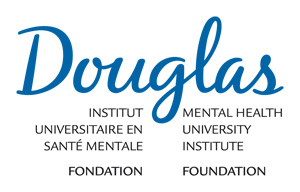Self-harm
Self-harm is when someone intentionally hurts themselves without intending to take their life. To burn or cut one’s skin, to hit oneself, or prevent wounds from healing are generally acts done by someone who is engaging in self-mutilation. People who are self-harming require help and support.
Who is affected?
Anyone can experience self-harm behaviour, with most people starting in adolescence. As many as 1 in 4 adolescents self-mutilate. Self-harm behaviour is more likely to occur in girls and people that have experienced traumatic events. According to the Canadian Mental Health Association, about 40% of people engaging in self-injurious behaviours have also been affected by an eating disorder, and about 50% have been victims of childhood physical or sexual abuse.
Anxiety Disorders
According to the Mental Illness Foundation, about a third of the population is affected by anxiety. Anxiety disorders include phobias, a fear response to harmless objects or situations; obsessions, for example wanting all the frames on a wall to be aligned; panic, extreme fears leading to feelings of impending doom; and generalized anxiety, a state of constant worrying that prevents a normal level of functioning. Although depression can include anxious symptoms, anxiety disorders and depression are distinct from each other, and it is possible for someone to suffer from both disorders.
Bullying/Peer victimization
Bullying or peer victimization refers to when a person hurts, scares, excludes or insults someone repeatedly. Peer victimization can be physical (hitting someone), psychological (hurtful comments), social (excluding a person from a group), or discriminating (bullying someone because of their religion, sexual orientation, origins etc.). Being bullied can negatively affect a person’s self-esteem, their relationships, their ability to trust, their sense of security and safety, and even their academic performance. Therefore, someone who is being bullied is susceptible to developing depression.


Learning difficulties and disorders
Youth affected by depression are susceptible to develop learning difficulties. It is also possible for youth with learning difficulties or disorders to develop depressive symptoms. Indeed, they often have trouble staying focused during tasks and get tired faster than normal. It can be difficult for them to memorize a lot of information and be adequately organized. Long exams and numerous classes represent a challenge for them. Particularly lengthy homework can take a long time to complete. Team projects can also be difficult since youth with learning disorders have difficulties interacting in social settings.
ADHD/ADD
Individuals affected by Attention Deficit Disorder have difficulty staying focused and, in cases with ADHD (with hyperactivity), they also have problems with impulsivity and controlling their behaviours. Since children affected by this disorder have trouble with concentration, good grades and academic performance are hard to maintain. When failures accumulate, self-esteem can decrease. In addition, half of children affected by an attention deficit also suffer from other problems such as anxiety, oppositional behavior, or depression. These problems can also lead to social issues.
Substance abuse
Substance abuse includes the consumption of drugs, alcohol, or other chemicals. More often they include tobacco, marijuana/cannabis, alcohol, non-prescribed medication, stimulants etc. Substance abuse has serious physical, psychological, and emotional consequences. Some signs that may indicate if an adolescent is using drugs are if they lack money and energy, their school performance is decreasing, they communicate differently with their family, they neglect their physical appearance, they seem slower and less focused etc.
Many young people consume drugs due to peer pressure or because of risk taking behavior. However, others use these substances to decrease their anxious and depressive symptoms, which may likely motivate them to abuse drugs.
